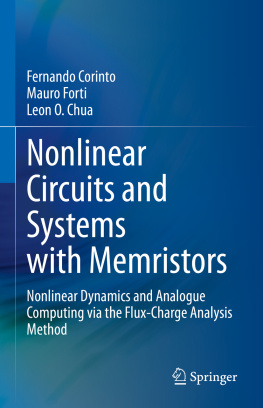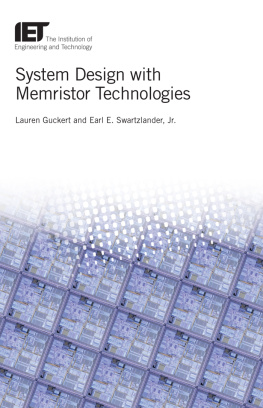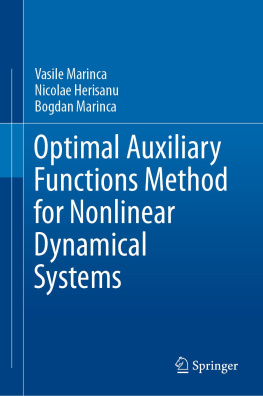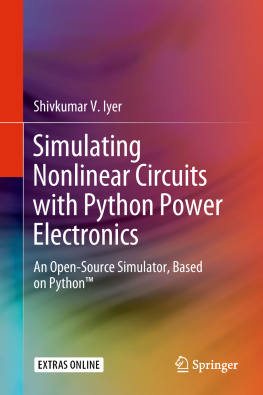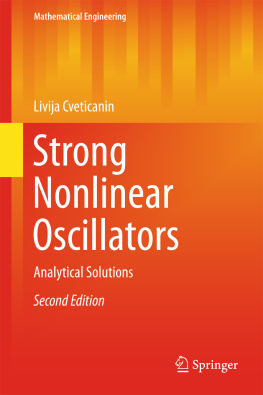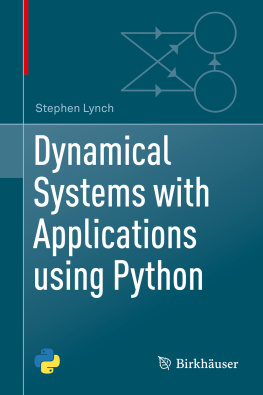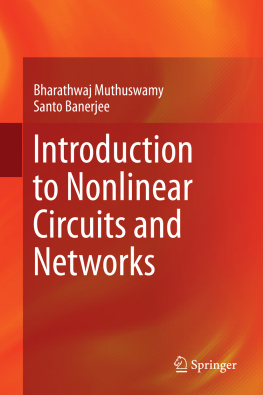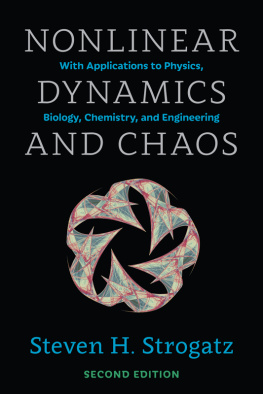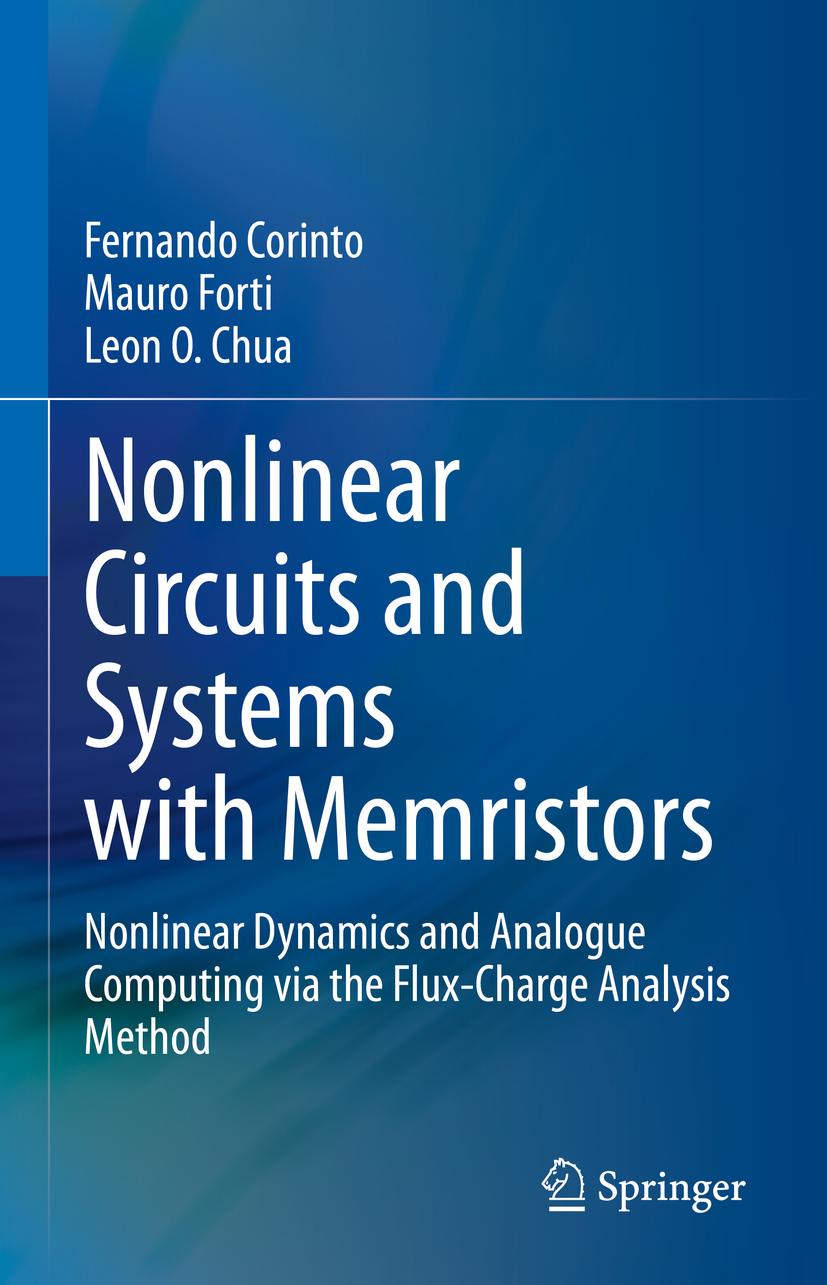Fernando Corinto , Mauro Forti and Leon O. Chua
Nonlinear Circuits and Systems with Memristors
Nonlinear Dynamics and Analogue Computing via the Flux-Charge Analysis Method
1st ed. 2021
Fernando Corinto
Department of Electronics & Telecommunications, Politecnico di Torino, Torino, Italy
Mauro Forti
Department of Information, Engineering and Mathematics, University of Siena, Siena, Italy
Leon O. Chua
University of California, Berkeley, CA, USA
ISBN 978-3-030-55650-1 e-ISBN 978-3-030-55651-8
https://doi.org/10.1007/978-3-030-55651-8
Springer Nature Switzerland AG 2021
This work is subject to copyright. All rights are reserved by the Publisher, whether the whole or part of the material is concerned, specifically the rights of translation, reprinting, reuse of illustrations, recitation, broadcasting, reproduction on microfilms or in any other physical way, and transmission or information storage and retrieval, electronic adaptation, computer software, or by similar or dissimilar methodology now known or hereafter developed.
The use of general descriptive names, registered names, trademarks, service marks, etc. in this publication does not imply, even in the absence of a specific statement, that such names are exempt from the relevant protective laws and regulations and therefore free for general use.
The publisher, the authors and the editors are safe to assume that the advice and information in this book are believed to be true and accurate at the date of publication. Neither the publisher nor the authors or the editors give a warranty, expressed or implied, with respect to the material contained herein or for any errors or omissions that may have been made. The publisher remains neutral with regard to jurisdictional claims in published maps and institutional affiliations.
This Springer imprint is published by the registered company Springer Nature Switzerland AG
The registered company address is: Gewerbestrasse 11, 6330 Cham, Switzerland
To Novella, Giorgia, and Sara
and in memory of AntonioF.C.
To Emiliana and in memory of SilvanoM.F.
To DianaL.O.C.
Foreword by Sung Mo (Steve) Kang
Nonlinear Circuits and Systems with Memristors is a timely contribution to the field of nanoelectronic circuits and systems. Personally, the contents of this book are dear to me, especially since I was one of the early graduate students of Professor Leon Chua at the UC Berkeley who at that time introduced memristors and memristive systems. The seminal paper on memristor by Leon Chua was published in 1971, followed by the Chua and Kang paper on memristive devices and systems in 1976. In microelectronics industry, CMOS Very Large-Scale Integrated (VLSI) circuits have been the dominant workhorse, the development of which has followed the Moores law. However, as the downscaling faced its limitations and because of the volatility of charge storage in ultrasmall capacitors in VLSI chips, nonvolatile resistance has become critically important as a new state variable. The demands for Resistive RAMs (RRAMs) and other memory devices such as MRAM, PCRAM, STT-RAM, which do not depend on charge storage, have increased. Analog computing has also become of increasing importance for ultralow energy computing as in neuromorphic computing. Almost four decades later, when Stan Williams and his associates in HP announced nanoscale memristors in the May 2008 Nature paper, a new epoch for integrated memristor circuits was established. HPs memristor was the first solid-state realization of the two-terminal memristor. It was my honor and pleasure to organize the first symposium on memristors and memristive systems in November 2008 under sponsorship of NSF and HP at the Berkeley campus, the fountain of the memristor research. Since then, memristor electronics has been pursued globally at a phenomenal growth rate. In particular, the application of crossbar arrays of memristors for analog neuromorphic computing has been pursued actively as one of the most promising approaches to the mimicry of brain functions. Two-terminal memristors are used in crossbar arrays with programmable memductances as learning weights. Coincidentally in their Proceedings of the IEEE paper (1976), Chua and Kang identified the conductive channels of the HodgkinHuxley model for neuromorphic signal (action potential) generation to be memristive. A few years ago, after giving a seminar on memristors at the Rowan University in New Jersey, its faculty members asked me when a textbook would be published on the subject matter for education of electronic circuits including memristors. Although this book is better suited for graduate students, I would expect that undergraduate textbooks on electronic circuits would include basic memristor circuits in the not too distant future.
In the beginning of this book, the authors take the axiomatic approach to describe the four basic circuit elements, namely R, L, C, and M (memristor), with focus on interesting cases involving nonlinear characteristics of elements. Through systematic formulation of circuit equations and rigorous analysis, the authors illustrate peculiar circuit behaviors of nonlinear RLC circuits, including oscillations and bifurcations. Theoretical discussions become even more interesting after including memristors for most general nonlinear RLCM circuits. The introduction of the flux-charge analysis method (FCAM) is not only novel but also uniquely revealing. The introduction of Kirchhoffs charge Law (KqL) and Kirchhoffs flux Law (KL) in lieu of KCL and KVL is enlightening and prepares the readers for systematic formulation and analysis of RLCM circuits. The application of FCAM to neuromorphic systems uncovers numerous peculiar dynamic behaviors. Undoubtedly, this book is unique and provides a rich set of interesting and intriguing topics for both interested graduate students and researchers. I congratulate the authors for the publication of this book and hope that the readers will benefit from studying the contents to enrich the field of memristive nanoelectronics.
Sung Mo (Steve) Kang SOE Distinguished Chair Professor, Chancellor Emeritus, UC Merced, President Emeritus, KAIST
Foreword by Ronald Tetzlaff
An increasing number of different two-terminal devices manufactured in distinct technologies can be classified as memristors with most popular developments so far, in technologies implementing dense, low-power nonvolatile memories and neuromorphic systems operating according to biological principles. Especially, recent investigations show a strong interest in new computing architectures required for future digital systems that are often based on communicating intelligent sensorprocessor architectures. The development of new memristor computing concepts in order to overcome the limits of classical technology caused by the so-called von-Neumann bottleneck is based on principles in which processing and data storage are carried out in the same physical location. These technologies are ranging from crossbar arrays to artificial and bio-inspired neural networks, including models of biological computation in a human brain. The availability and application of these so-called in-memory computing systems would obviate the need for energy-expensive data transfer operations on the memory-CPU in future IOT networks. While different authors have shown in an increasing number of publications that certain mathematical operations can be performed rather efficiently on crossbar arrays, attractive concepts of universal computation are based on the emergence of complex behavior in strongly nonlinear dynamical arrays. By investigating the so-called reactiondiffusion systems, Leon Chua has derived the fundamental results that prove that the emergence of complexity in these structures is based on local activity and in particular on a parameter subset called the Edge of Chaos. Typically, the treatment of such highly nonlinear, memristive spatiotemporal systems, which exhibit oscillations, pattern formation, and wave propagation phenomena, is based on the availability of compact device models and on new mathematical strategies to gain a deep understanding of the mechanisms of such systems in order to enable the derivation of highly efficient in-memory computing methods. Although mem-elements and memristive circuits have been addressed in a bulk of publications, an in-depth mathematical treatment and understanding based on circuit theory has been provided in only a few investigations. Mostly, present model-based simulators operating in the voltage-current domain make qualitatively incorrect predictions, especially when applied to the problems of nonlinear dynamics. There is a lack of accurate but stable compact device models that allow the simulation and design of future memristive dynamic circuits, which are needed for the digitalization of todays technology.

